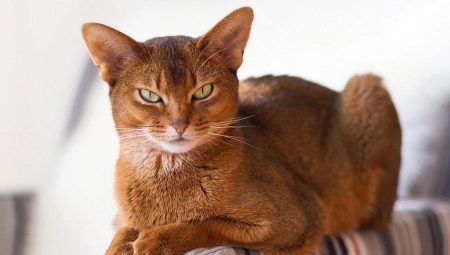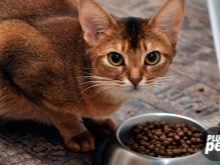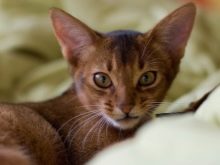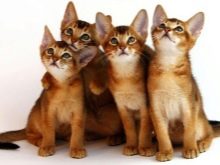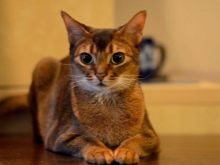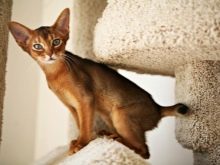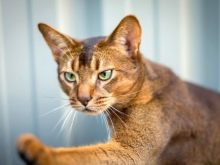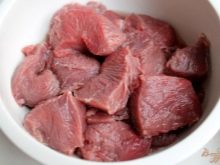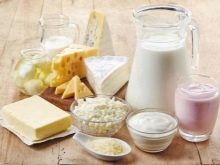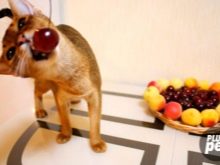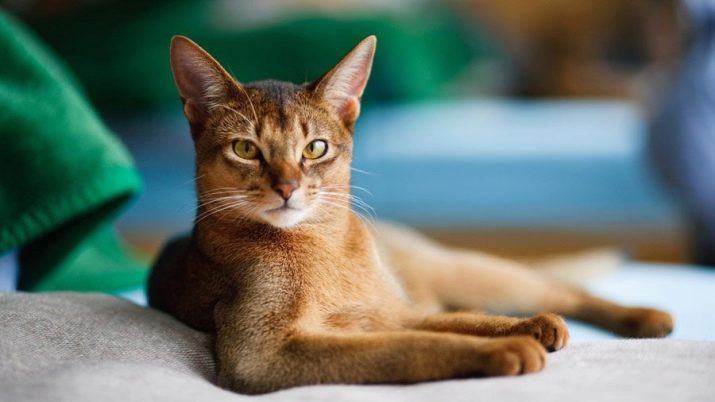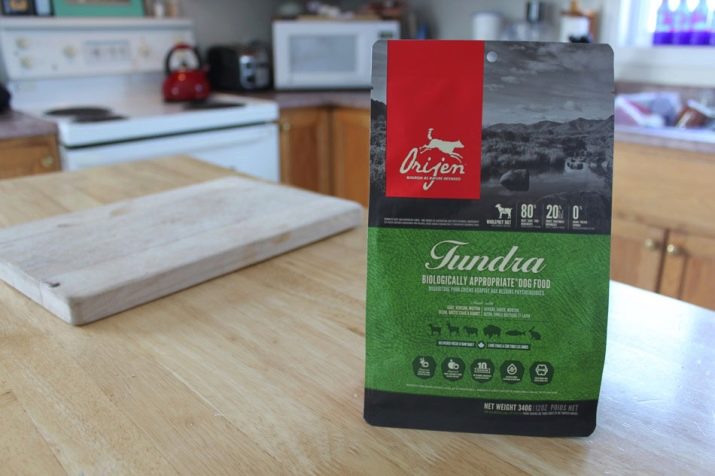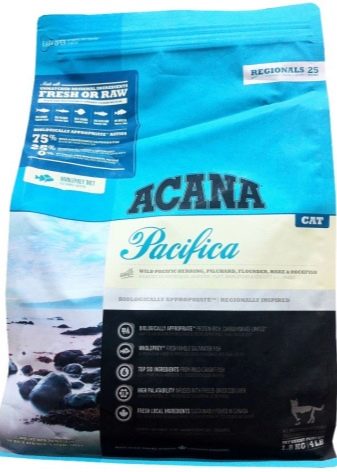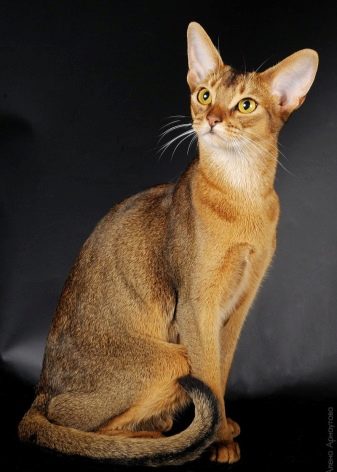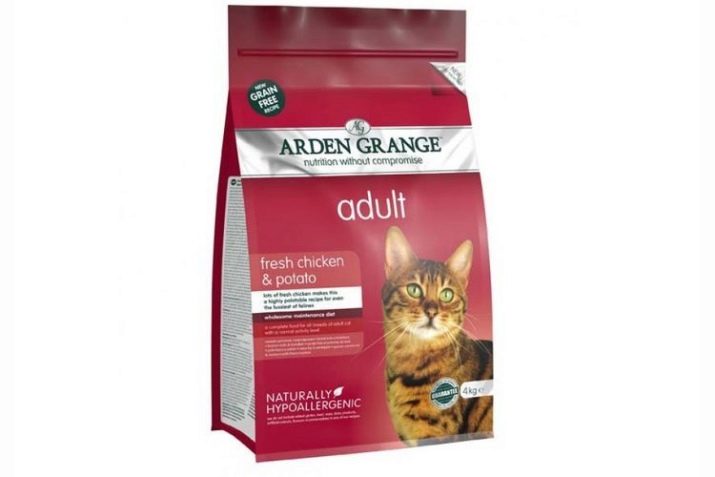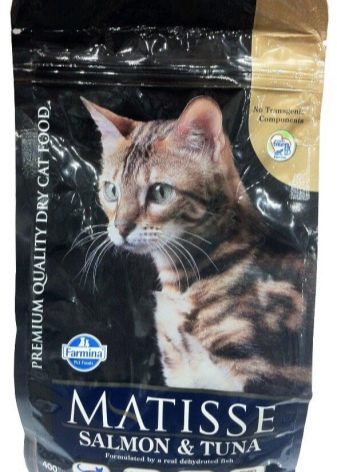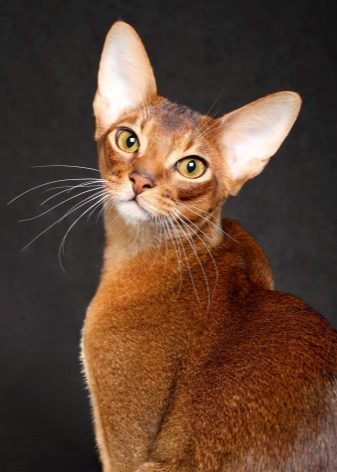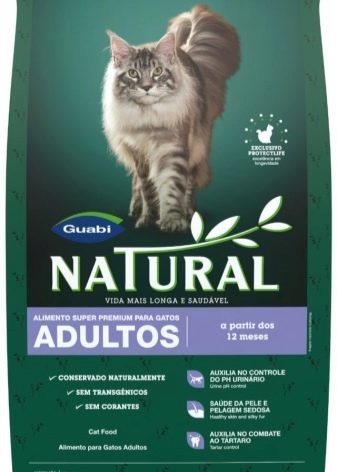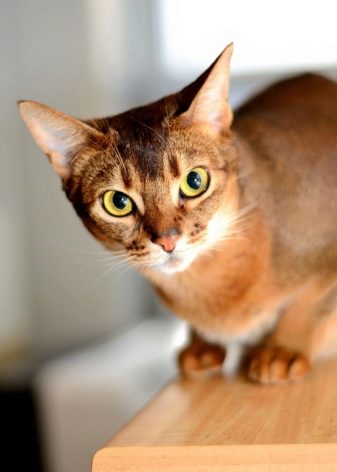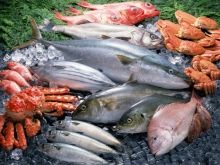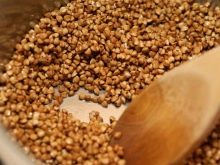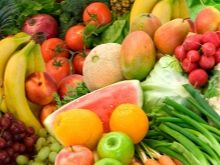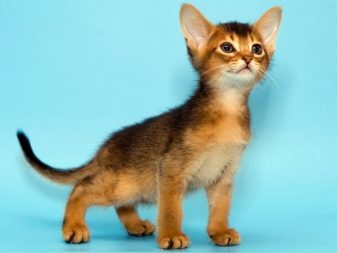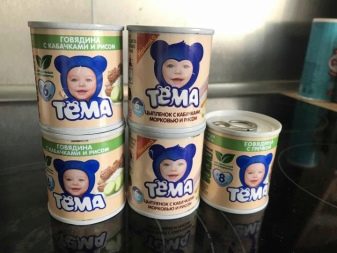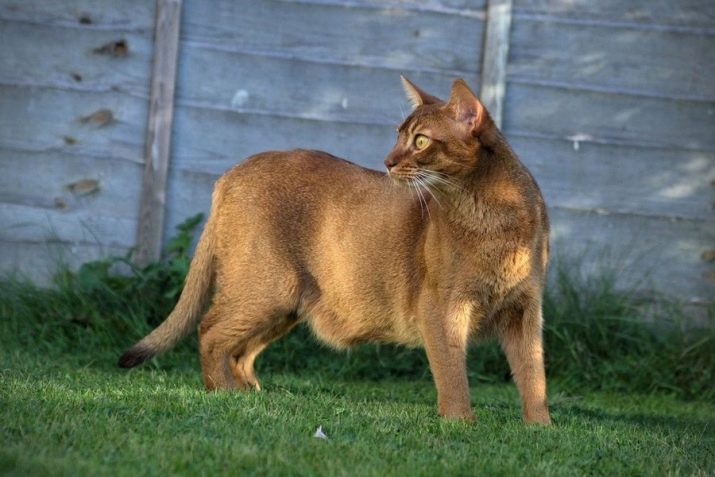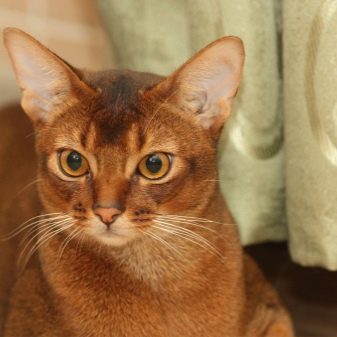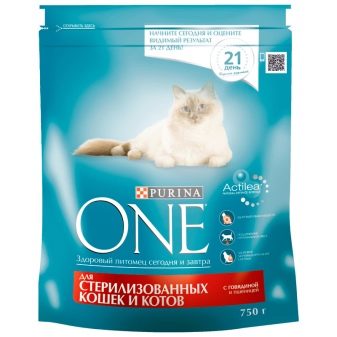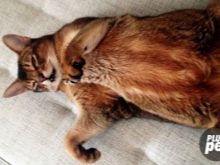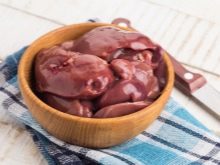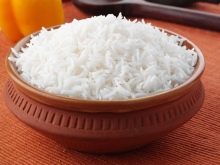"Domestic cougar" - this is what the Abyssinian cat is often called, it is mobile, flexible and very elegant. Like all other purebred animals, it is quite picky in nutrition. With proper organization of feeding a pet, these "predators" can live up to 20 years.
Nutritional needs
If you decide to become the owner of the Abyssinian, be sure to consult with a veterinarian on its feeding and drawing up a balanced diet. Be sure to monitor the health of the cat, it is very important not to overfeed these little pumas. Despite the fact that this breed is rather tiny, in most cases it is uncharacteristically gluttony. There are often situations when an animal cannot stop near a filled bowl of food.
Abyssinians are truly royal cats, so it’s very difficult for them to eat and it’s difficult to find the right food.
Nutrition "puma" should be nutritious and balanced, enriched with useful vitamins and mineral elements. In addition to feed, the animal should be given naturalka. In general, a cat's diet should include several components.
- Dry food is the basis of food Abyssinians. Nowadays, there is a wide range of feeds from different manufacturers in the stores, but it is better to give preference to the more expensive ones, as the food directly affects the health of your pet. Keep in mind that this food does not contain liquid, so the cat must necessarily stand a bowl of water. The daily rate of drinking an adult animal is 130-140 ml.
- Wet food. It is given to animals from time to time, it is not suitable for everyday food. It is used only as an addition to a dry diet.
- Meat. For a full feeding, the Abyssinian needs proteins, and meat is an excellent source of them. For cats and cats suitable rabbit, veal, lamb meat and chicken, but to give pork is not recommended, because this product often contains helminths.
- A fish. Only sea fish is suitable for feeding Abyssinians, and it is also possible to occasionally offer shrimp and other seafood to your pet. Enter the fish in the diet should be gradually, starting with small portions. If this food comes to taste the cat, you can safely include it in the diet in the future.
- Milk products. Home-made sour cream, low-fat cream, dry cottage cheese, milk, and also yoghurt should be present in the animal menu as a source of calcium. But they should be offered rarely and in small dosages, otherwise there is a high risk of disturbance of the digestive system.
- Vegetables and fruits. Abyssinians often cannot resist various juicy fruits and fresh vegetables. You can safely include them in your daily diet only if your pet has no allergies to this product.
The following products are strictly forbidden to enter the Abyssinian cat in the menu:
- sausages, wieners, ham and other sausages;
- both meat and canned fish;
- all types of smoked meats;
- dishes seasoned with spices and spices;
- salted and pickled foods;
- sweets, rich products.
Rating and selection of finished feed
When choosing food, it is necessary to take into account such fundamental points as:
- cat age - small Abyssinian kittens develop much more slowly than kittens of other breeds;
- vet appointments - usually the doctor makes recommendations, taking into account the physical condition and shape of the cat;
- health features of parents - it is necessary to know exactly what hurt the mother and father of the young Abyssinian, whether they had allergies and hereditary pathologies;
- chair features - improper feeding often leads to constipation or diarrhea of the cat; in case of violations, the feeding regime of the animal should be immediately changed.
The cat will not be able to tell about the quality and balance of nutrition, but for her it will make the condition of fur, teeth and claws, as well as the eyes and nose. If the pet shines, it is very mobile and remains active for most of the day, then the food is rational and correct.
Let us dwell on the best dry food for cats of this breed.
Orijen Tundra
It is a product of Canadian production, it includes dried meat and sea fish. The meat component is represented by venison, wild boar, as well as meat and various offal of sheep and lambs. The fish part includes blue whiting, sardine, cod, as well as arctic char. The share of these products accounts for about 85% of the total feed, the remaining 15% are fruits and vegetables: beans, pumpkin, carrot, lettuce, beet tops and parsnips.
From the fruit most often for the manufacture of food use cranberries, apples and pear. The source of inulin needed for cats is chicory root, and extracts from cod liver oil enrich the product with Omega-3 and Omega-6 fat-soluble acids.
Acana pacifica
This is another product from Canada, it is 75% made of hake meat, as well as sardines and wild perch, the remaining 25% – these are peas, red and white beans, lentils, turnips, as well as pumpkin, blueberries, cranberries, more wild rose, pear, green apples and carrots. The ratio of proteins and fats in the product corresponds to 37% and 20%, the feed is enriched with Omega acids. All vegetables included in the product have a lower glycemic status, which is especially important for the prevention of overweight and the development of diabetes.
The product does not contain any flavoring agents, preservatives or other synthetic additives.
Arden Grange Adult Cat
This is a premium UK product. The protein content is 31%, fat -18-19%. The product includes meat component (meat and poultry flour, chicken fat), as well as fish (fish oil with fish meal). The food is enriched with beet pulp, corn, rice, egg powder, as well as brewer's yeast. To normalize the intestinal microflora in the feed are introduced prebiotic, as well as vitamins A, D3 and E. The amino acid taurine is used as a food additive.
Farmina matisse salmon
This is a balanced feed of the Italian company. It contains 32% protein and 11% fat. The feed includes meat of salmon or tuna, chicken, fish and poultry fat, as well as oil, beet tops, milk corn and brewer's yeast. The product is rich in vitamins of the group. B, A, E and D3, does not contain any artificial additives.
Guabi natural
This is the Brazilian feed with increased dosage of protein components (34%). The product is made from chicken meat, chicken liver and by-products, pork plasma, eggs, beet pulp, sugarcane marc are also added to the composition, it is all diluted with vegetable oil and seasoned with yeast. Additionally, add extracts of apple, rosemary and green tea, as well as taurine.
The menu of natural nutrition
The diet of the Abyssinian cat must necessarily include a naturalka.
- The need for proteins is covered by chicken, veal, turkey meat, white fish, eggs of hens, ducks and quails, dairy products. The body of the Abyssinians covers the lack of carbohydrates due to cereal porridges, and all the vitamins and fiber are obtained from ripe fruits, juicy vegetables and young greens.
- Beef animals give pre-frozen for 2-3 days. Meat is cut into small cubes, it is better to choose with streaks, then the cat can not only eat, but at the same time clean the teeth.Meat is included in the pet menu daily.
- The by-products often contain helminths, so they are boiled before serving "on the table". The liver, heart and lungs are introduced into the animal menu 2-3 times a week in small portions.
- Fish must certainly be present in the diet of the animal. It serves as a source of essential omega-acids, as well as calcium and phosphorus. Keep in mind that with frequent use of the product, the “domestic puma” may develop gallstone disease, therefore, an animal needs one fish day in 7–10 days.
- Eggs are given in boiled form, mixed with vegetables and cereals. As a rule, weekly consumption of the product does not exceed 1 chicken or 2 quail eggs.
- Sour milk. Feeding with kefir, yogurt, cream and unsweetened yogurt is allowed up to 4 times a week. The product contributes to the development of digestive enzymes and improve the gastrointestinal tract.
- Porridge for cats are cooked in meat broth, and you can on the water without adding sugar and seasonings. They are usually mixed with meat and fish. You can include them in the menu every day.
- Abyssinians eagerly consume fruits, vegetables, and greens. Products are crushed and added to meat or fish in a 1: 2 ratio.
- For cleansing the intestines from the accumulated clumps of fur, cats give germinated cereals. For the shine of wool injected brewer's yeast.
Important! All cooked food must be fresh and heated.
What to feed a little kitty?
The body of a young cat of the Abyssinian breed develops much more slowly than the organism of kittens of other varieties. Therefore, up to six months they are given exclusively specialized food for small animals. At 1.5–2 months, they start introducing complementary foods into the diet - these can be milk porridges, chopped meat or yolk of chicken eggs. Many breeders feed their wards with baby food, for example, “Theme” or “Agushi”, in small portions they introduce crumbly curd and chopped cheese.
In 3 months, the teeth are replaced, at this moment dense lump food should certainly prevail in the menu, therefore vegetables and meat products should be cut into larger pieces so that the animal gradually becomes accustomed to chewing. Up to 4 months, the kittens are fed 6 times a day, from 4 to 12 months - four times. Adult food is allowed only after a year. It should be introduced gradually, since cats of this breed have a rather sensitive digestive system. Usually, the proportion of baby food is reduced, and the adult is gradually increased - the complete replacement of the diet takes about 1 month.
Important! A kitten should always have water, preferably filtered, spring or bottled.
Features of the diet of pregnant and lactating cats
Pregnant and lactating cats require a reverent attitude to feeding, At that time, their menu should be rich in essential vitamins, micro and macro elements, namely:
- for proper formation of the fetal skeleton, the animal requires calcium and fluorine; if there are not enough of these elements in the feed, it starts leaching from the maternal organism;
- deficiency of vitamins and mineral elements leads to a failure in the tab of the internal organs of the fetus;
- lack of amino acids can often trigger miscarriage;
- lack of taurine causes pregnancy to die;
- the absence of fatty acids lead to pathologies of the animal's neural tube.
Important! During this period, the cat should be provided with all the necessary nutrients in full. Daily nutrient requirements should be 1.5–2 times higher than in normal condition.
Feeding sterilized pets
Sterilization often leads to pathologies of the genitourinary system of animals, so their diet should be special. Feed for eunuchs must necessarily contain low concentrations of magnesium, phosphorus and calcium, and fish is contraindicated for them - these foods can lead to the appearance of kidney stones.
For such animals it is better to use special food.At least half of the diet should be natural food, consisting of meat, by-products, vegetables and cereals. It is very important to monitor the weight of your pet. Usually, after castration, cats become less mobile, lose interest in cats and acquire it in food, therefore animals should be fed in small portions.
If the mass of the animal begins to grow rapidly, dry food should be replaced by lower-calorie varieties of the product or go completely to naturalku.
Fighting obesity
If your pet has begun to recover rapidly, it is necessary to start fighting obesity as early as possible, otherwise there is a high risk of developing serious diseases and even death of the pet. First of all, they reduce the caloric content of food, which can be done either by reducing the volume of servings, or by changing the diet itself. For obesity, delicacies and delicacies are completely removed from the menu, unfortunately, you will have to completely abandon dry food.
However, this is not a reason to get upset - You can always choose the optimal low-calorie product from a specialized line of the usual manufacturer. It is best to overweight to prepare food for your pet yourself, for example, from the liver, rice, sunflower oil, calcium carbonate and vitamin supplements. Boil the rice, cut the liver, combine with butter and grind to a paste. The daily rate of feed should not exceed 200 g, the products are divided into 2-3 doses.
See more on the Abyssinian cat in the next video.
